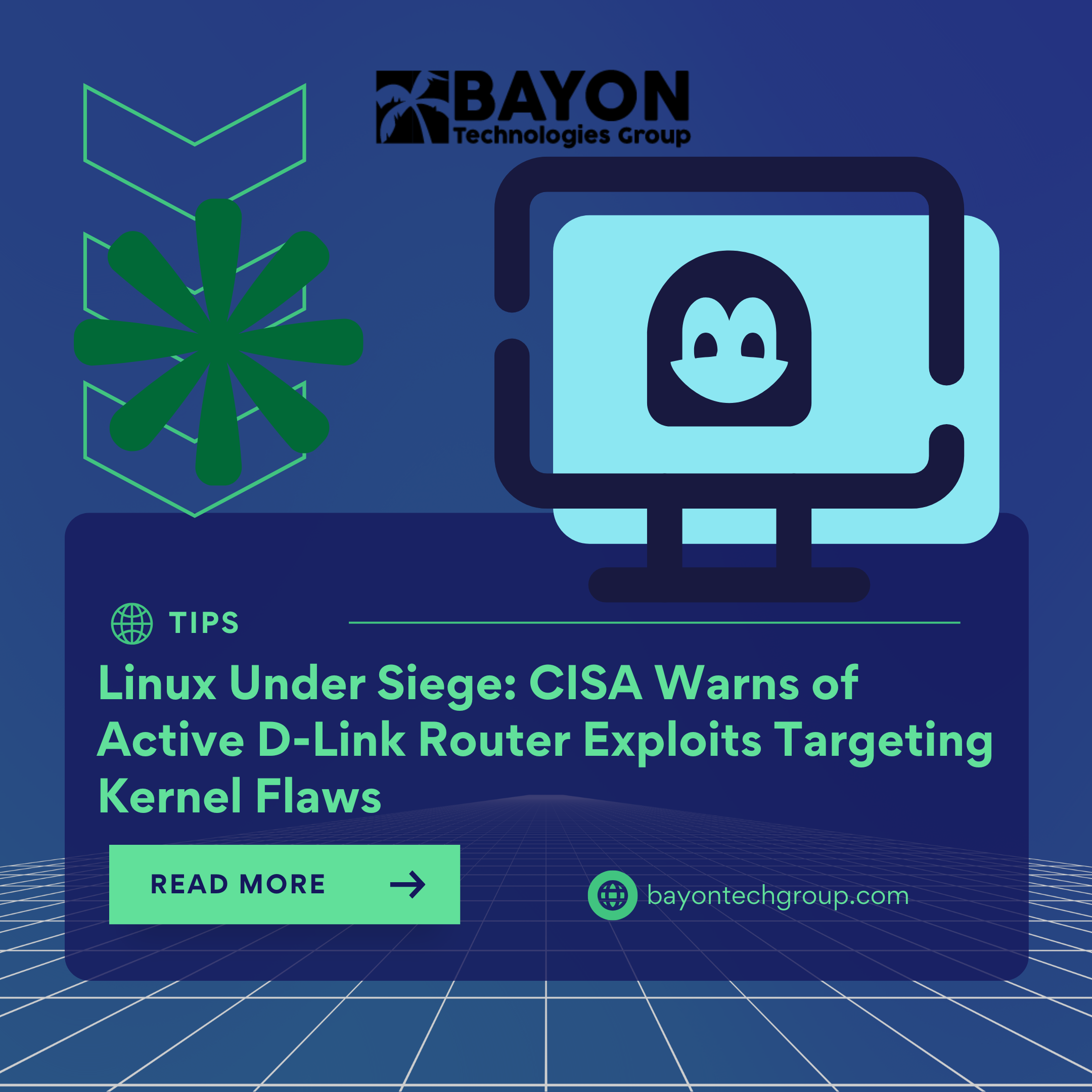Linux Under Siege: CISA Warns of Active D-Link Router Exploits Targeting Kernel Flaws

An emergency alert has been issued by the U.S. Cybersecurity and Infrastructure Security Agency (CISA): Critical Linux kernel flaws in D-Link routers that are nearing the end of their useful lives are being used by state-sponsored hackers to take over networks. Businesses that use Linux-based systems are at risk of widespread remote code execution (RCE) assaults, since more than 92,000 susceptible devices have been made public.
The Linux Kernel Vulnerabilities: CVE-2024-32752 & CVE-2024-32753
These flaws in D-Link's Linux firmware (DIR-859/815/825 models) enable:
- Unauthenticated RCE via HNAP
Attackers bypass authentication to execute commands through Linux’s HNAP protocol handler.
- Permanent Root Backdoors
Malware embeds in Linux filesystems (/etc/config), surviving reboots.
- Botnet Recruitment
Compromised devices launch DDoS attacks from Linux environments.
Real-World Impact: A Texas HVAC supplier’s Linux-based D-Link router was weaponized to breach their industrial controls, causing $220K in ransomware damages.
Why Linux Devices Are Prime Targets
- Unpatchable Kernels = End-of-Life: D-In 2017, Link stopped providing security upgrades, exposing vulnerabilities in Linux.
- According to the FBI (2025), 61% of IoT botnets are powered by compromised Linux devices.
- Stealth Persistence: To carry out reinfection, attackers use Linux cron tasks and init scripts.
High-Risk Industries:
- Manufacturing (Linux-driven OT networks)
- Healthcare (Linux-based medical devices)
- Retail (POS systems running Linux)
Attack Chain: Taking Advantage of Linux Flaws
- Check for Linux Kernels That Are Vulnerable
Routers running unpatched Linux versions can be found using tools like Shodan.
- Use port 8080 to send malicious HNAP payloads and take advantage of Linux kernel memory damage.
Install Linux Malware Use ransomware such as ESXiArgs or versions of Mirai.
- Switch to Business Networks
Use reliable routes to target Linux servers (Ubuntu, CentOS).
5 Critical Mitigations for Linux Environments
- Replace End-of-Life Linux Routers
Immediately retire D-Link DIR-series and other unsupported Linux IoT devices.
- Hardening Linux Kernels
Disable unused services (HNAP/UPnP); block port 8080 at firewalls.
- Segment Linux Networks
Isolate IoT/Linux devices from core business VLANs.
- Monitor Linux Logs
Audit /var/log/auth.log for brute-force attempts and cron anomalies.
- Reset Linux Configs
Wipe /etc/config partitions to remove backdoors (temporary fix).
The Greater Danger: Neglected Linux Environments
A systemic crisis is revealed by this CISA alert:
- According to SANS 2025, 33% of enterprise Linux devices are running end-of-life kernels.
- Linux-based network edge devices are aggressively targeted by state actors.
- To gain first access, ransomware criminals take advantage of Linux vulnerabilities.
Bayon Technologies Group: Secure Your Linux Infrastructure
Legacy Linux devices are cyber time bombs. We provide:
✅ Linux Vulnerability Scans: Detect unpatched kernels and misconfigurations.
✅ IoT-Linux Hardening: Custom iptables policies, kernel module lockdowns.
✅ 24/7 Linux SOC Monitoring: Hunt for botnet C2 traffic and rootkits.
✅ SD-WAN Replacement: Migrate from vulnerable Linux routers to secure appliances.
Don’t let a $60 Linux router cripple your business.
‹ Back







